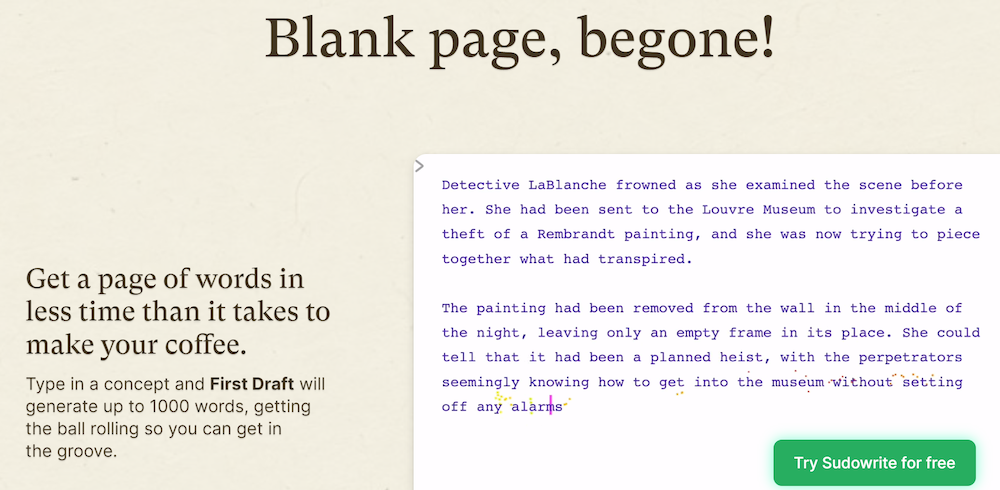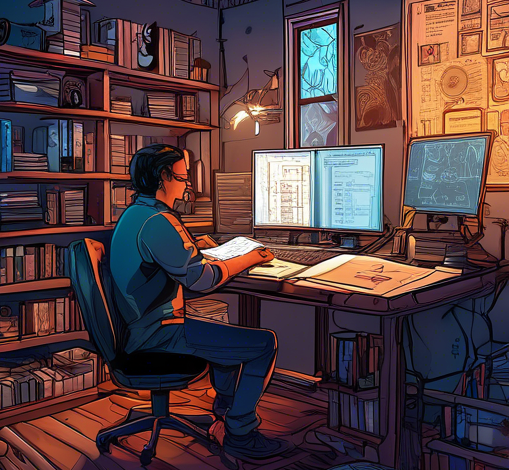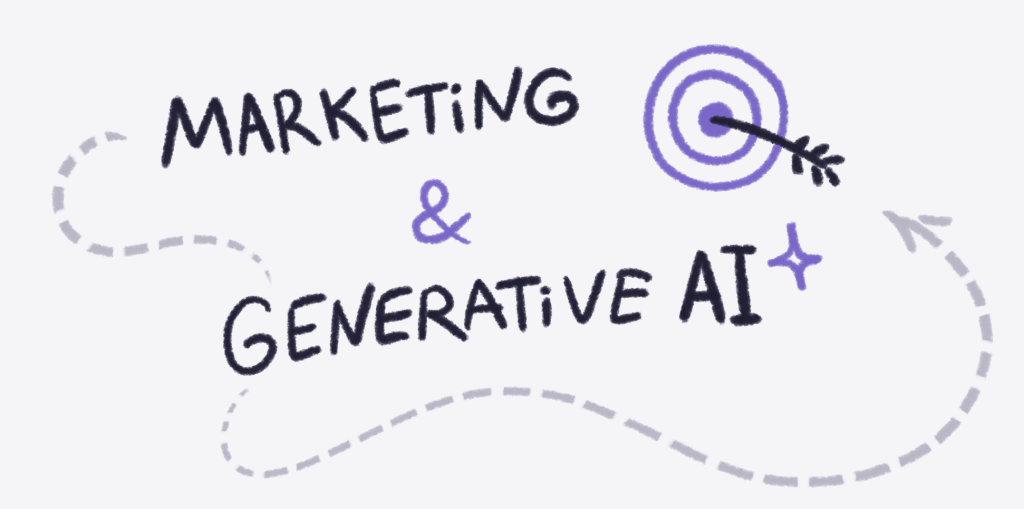Okay, all of you content junkiers, editors, bloggers, and journalists out there. Admit it. Haven’t you all entertained the idea of writing a novel? A big, sweeping story about your dysfunctional family.
Or maybe it’s the eccentricities of the neighborhood or small town in which you grew up. It could be about the influence of politics on your community–what it means to be a minority, for instance. If you’re serious, you need to know about the best AI writing tools, particularly Sudowrite, an innovative AI humanizer designed to humanize AI-generated content and transform it into natural-sounding prose.
My friend Stephen mulls writing about his rockstar great-grandmother
Grandma was an inspiration, a woman ahead of her time. She was an early settler in the Napa Valley who stepped up after her husband died, managed the farm and dairy and built a schoolhouse to make sure her kids were getting an education.
This could be the launching pad for a story about California’s wave of immigration in the mid-1800s that kicked off with the Gold Rush. You get the idea. Winnow down your topic, identify and introduce your characters, create a plot, subplots and start building events and interactions to roll up to those plots.
In this case, what kinds of crises did Grandma face over the course of her life? Weather issues–early fall rains that ruin the grape harvest. Phylloxera feeding on the roots of the cabernet vines and ultimately destroying them. Catastrophic injuries to family members who are essential to the running of the farm.
Start thinking about what your characters will look like
Their faces, hair and body types are important parts of character development. How will your characters interact with each other? Their relationships likely will be the heart of your story. What about the settings and scenes? Will your book be set in a small town on the coast? If so, will you describe what it’s like in the winter after all the tourists have gone home and you have the beach to yourselves and you won’t have to compete for dinner reservations. This is when you start to realize that this novel thing is bigger than a breadbox.
But what happens when you run out of ideas?
Or when you get writers’ block? Because you will inevitably stall. You’ll spend days writing pages that are worthless and irrelevant. You’ll wonder how to get back on your former creative track? This will be especially important for first-timers.
If you’re serious about writing your novel, thinking that this is more than just a little vanity project, you need to know about Sudowrite, an AI writing partner. It’s a powerful tool to humanize AI content and transform it into natural-sounding prose. Try it out as a free AI humanizer to evaluate. Subscriptions start at $10/month.
So I’m one of those who’s always flirted with the idea of writing a novel, and I took Sudowrite out for a test drive.
It all starts with a Story Bible, a workflow.

AI story generator: It’s a brain dump
Put AI to work so that this AIhumanizer can start building a story. Include plot, character, images, theme, keywords, etc. A story bible is all of the core elements of your story. These elements can change, but they’re a comprehensive starting place. Also include the genre and describe how this will be developed. Is your novel a history, mystery or romance? Maybe it’s way too early to know and it can change.
Brainstorm ideas and refine them and get feedback from your colleagues. Sudowrite creates a powerful partnership between human creativity and AI, offering features like the Brainstorm feature to spark new ideas and enhance search engine optimization for your content.

Introduce your characters in Sudowrite, a story AI
The more details the better. Remember that AI needs details to go to work. What are your character goals? If it’s that great-grandmother in Napa Valley, her goals are immediate and desperate. Her husband dies unexpectedly and she’s tasked with running a business and raising three kids on her own.

More details that will help build out your story. Think about settings and key events. If you’re writing about your dysfunctional family, explain how the economy had an impact on the overall wellbeing of you and your siblings. Did religion play a role, and identify seminal events that helped shape your childhood–birthdays, holidays, graduations, etc. Going back may spur new memories and things to write about. These are humanizers, the details that an AI book writer needs to go to work.
Note that you can always hit the Rewrite feature to get ideas for rewording and rephrasing. You can also add descriptions, which can help build richer, more interesting and complex characters.
Try the Brainstorm Mode
As someone who occasionally hits creative roadblocks, this feature was a lifesaver. I fed it a basic concept, and Sudowrite presented me with a choice of directions to take my story, which I then turned into beats for each chapter. Amazing. Think about having a brainstorming session with someone who never runs out of ideas! This is where the AI model’s story smarts really shine.
Writing style analysis
So I dropped the first 500 words of this article into the Analysis field. Sudowrite put AI to work and came back with the following analysis in bullets below. Besides the great feedback, this gives you an idea of the kind of benchmarks that Sudowrite is able to evaluate. Note that Sudowrite mentions that there’s no dialog, but I “mimic conversational speech through rhetorical questions and direct address”. Ridiculous. That’s just not good enough. If you’re going to write a novel, you’re going to have to master dialog.
-
Tone and mood. The tone of the piece is conversational and encouraging, creating a sense of camaraderie with the reader. The mood is reflective and slightly nostalgic.
-
Point of view (POV). The piece is written in the second-person point of view, directly addressing the reader with “you” and “your.” This perspective fosters a personal connection.
-
Vocabulary and word choice. The vocabulary is accessible and informal, with a mix of everyday language and some more specific terms related to writing. The author employs figurative language sparingly, focusing instead on clarity and relatability. It’s AI humanizers that make language accessible, but AI content is notoriously bloated. We’re the authors here and we should be creating crisp copy that’s easy to read.
-
Sentence structure. The sentences vary in length, with a mix of short, punchy statements and longer, more complex constructions.
-
Pacing and rhythm. The pacing is moderate, allowing for thoughtful reflection while maintaining a sense of momentum. The rhythm is conversational, with a natural flow that mimics spoken language.
-
Dialogue. While there is no direct dialogue, the piece mimics conversational speech through rhetorical questions and direct address.
-
Descriptive Style. The descriptive style is straightforward and practical, focusing on clarity rather than elaborate imagery. The author provides enough detail to paint a picture of the writing process.
-
Themes. Recurring themes include creativity, the writing process, and the importance of personal experience in storytelling.
-
Cultural and Historical context. My writing reflects contemporary attitudes toward writing and the use of technology in the creative process.
Here’s the fun part: Sudowrite wraps it up with a style summary!
This is a summary of the first 500 words of this article. Conversational and encouraging, the style directly engages the user in the second person. It balances accessibility with thoughtful insights. Varied sentence structure fosters a personal connection and perhaps most of all, makes it easy to relate to.
Overall, the writing style is approachable, practical, and supportive, making it an effective guide for aspiring novelists.
In less than a minute, AI weaves together your beats to seamlessly generate a chapter. Once the chapter is created, you can go in and make any necessary edits or move on to the next chapter.
Sudowrite stands out among various AI writing tools on the market due to its tailored features designed specifically for creative writers. One of its most impressive capabilities is the ability to generate ideas and prompts based on the input we provide. Whether I’m struggling with a plot twist or need inspiration for character development, Sudowrite can generate multiple suggestions, allowing for individual creativity and personalization.
Another notable feature is Sudowrite’s capacity to analyze and enhance existing text. I can drop in my text and Sudowrite responds with a feedback loop. It presents me with suggestions for revisions, alternative phrases to enhance clarity and engagement, all while maintaining natural language flow.
This workflow helped me refine my writing
I like to write something one day, then review it again the next day. I often find myself wondering what the hell I was thinking when I initially wrote it! What a difference 24 hours makes–we see things so differently. Going back and reviewing my burgeoning novel again in a few months means that I likely will be doing some serious rewriting.
Tools for dialog generation and setting scenes
This may be the most important feature for novel ai newbies. Dialog generation is challenging. We may have decades worth of writing experience, but we’ve been pumping out business documents–speeches, articles, newsletters, white papers, reports, blogs, etc. Creating compelling dialog that sounds easy and natural is not something we’ve learned to do. Dialog is a crucial part of storytelling, and having an AI assistant that can provide feedback and guide us can significantly streamline the writing process.
Sudowrite distinguishes itself through its focus on creative writing ai
As writers, we experience an inevitable creative ebb and flow. Sometimes we’re inspired and words come effortlessly; other times it’s a struggle. This is where Sudowrite becomes a writing partner. Sudowrite generates prompts and ideas and helps get writers back on track.
Setting specific goals and deadlines within the platform, users can track progress and stay on task. This structured approach is particularly beneficial for long-term projects, where staying motivated can be challenging. Sudowrite’s organization features enable me to visualize my writing journey clearly, fostering a sense of accomplishment as I complete each milestone.

Overcoming writer’s block with Sudowrite
Many of us struggle with writer’s block, where those self-defeating dialogs set in and sabotage our efforts. But Sudowrite helps remedy writers block by suggesting story twists and new character developments. It’s the collaboration with AI that creates this creative spark and may take you in new directions that may not have been possible without AI.
Ethical considerations in AI-assisted writing
The ethics. We’ve not even begun to address these. There are those who fear we’ve become too dependent on AI writers. That Sudowrite, an AI assistant, will replace good storytelling by a real human writer. Not to worry. New AI writers hit the market every day with big promises. We now have AI humanizers that humanize ai text and plagiarism removers. All strive to make AI content great and all fail miserably.
I try to write conversationally. I want to be talking to my audience. If I put this through an ai to human text converter, my writing comes back boring, with big words, completely ignoring the style I’m trying to achieve. It may be AI humanized, but it’s still boring AI content.

Sudowrite is a tool, a resource, not a crutch
Use it to help you get organized, suggest new ideas and help inspire new direction for your novel. I love that you can use Sudowrite to try new directions that may or may not work, and you haven’t lost anything. This is the creative process.
Conclusion: Embracing AI writing
Sudowrite jumpstarts the storytelling process. Its ability to organize information and direct our creative processes is only one of its strengths. Its ability to let us experiment, to try something new and to fail, may be an overlooked strength of this writing assistant. It saves everything, so we can return to our original version if we don’t like what we created. That frees us up to explore new ideas and creative paths.
Overcoming writer’s block, providing analysis of what we’ve created are only parts of what Sudowrite can do. Once again, as writers and users, we find ourselves at the intersection of our own creativity and AI assistance. We’re conditioned to be wary of AI assistants and humanizers, but Sudowrite is not just another book writing ai. By integrating Sudowrite into our writing processes, we’re simply welcoming a new storytelling partner. We’re doing our own versions of humanizing AI content. This is a collaboration; we’re taking the best of what AI offers us and using it as a guide.
For students, researchers, PR professionals, educators, and business executives alike, Sudowrite offers a range of features to enhance the writing process. For fiction writing, academic papers, or business reports, AI writing software can help you improve your work. Even nonprofit organizations, web developers, and HR professionals can benefit from Sudowrite’s capabilities.
While tools like Grammarly focus on grammar and style, and Jasper.ai provides general AI writing assistance, Sudowrite specializes in creative writing. It’s not just a ChatGPT humanizer or a human ai generator; it’s a comprehensive tool that understands the nuances of storytelling and creating narratives.
These tools are augment human creativity, not replace it. Sudowrite and other ai writing tools are designed to work alongside human writers to produce better, more engaging content that’s plagiarism-free.
Embrace the power of AI writing tools. You’re the one who brings your stories to life.
Are you interested in learning how to use AI tools in your business? Contact Janet Peischel, digital media and SEO specialist: 510.292.1843

